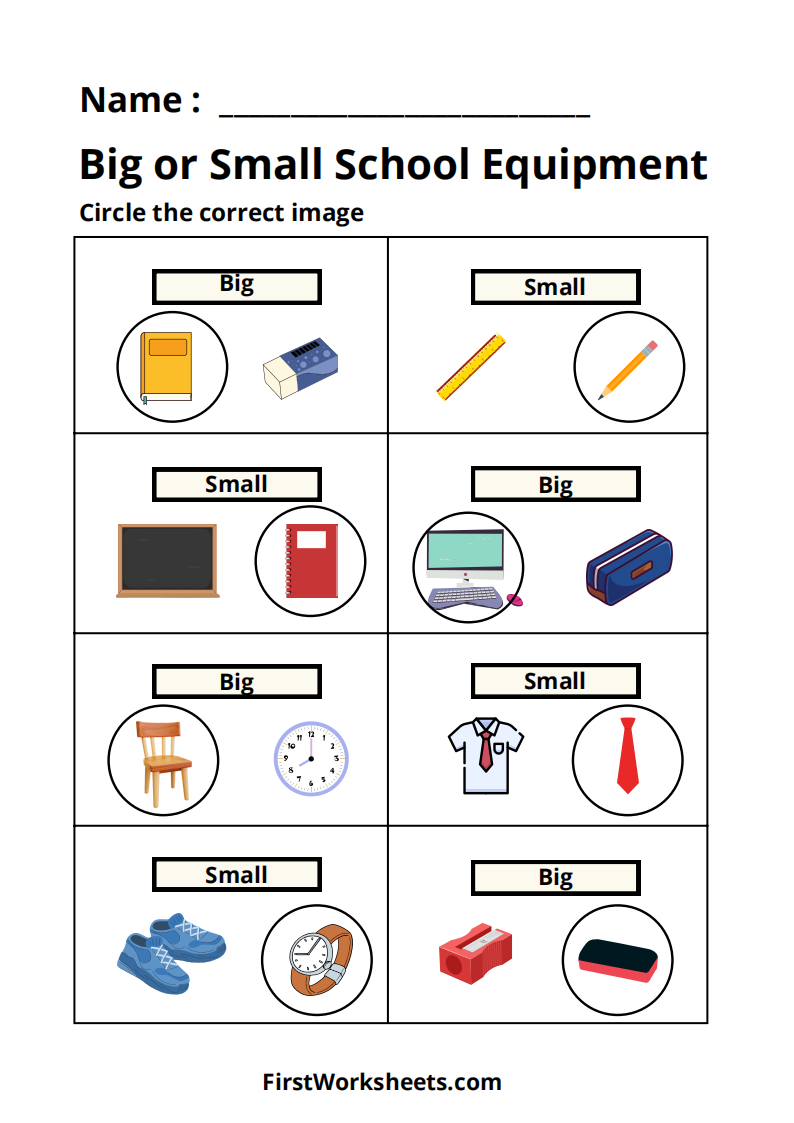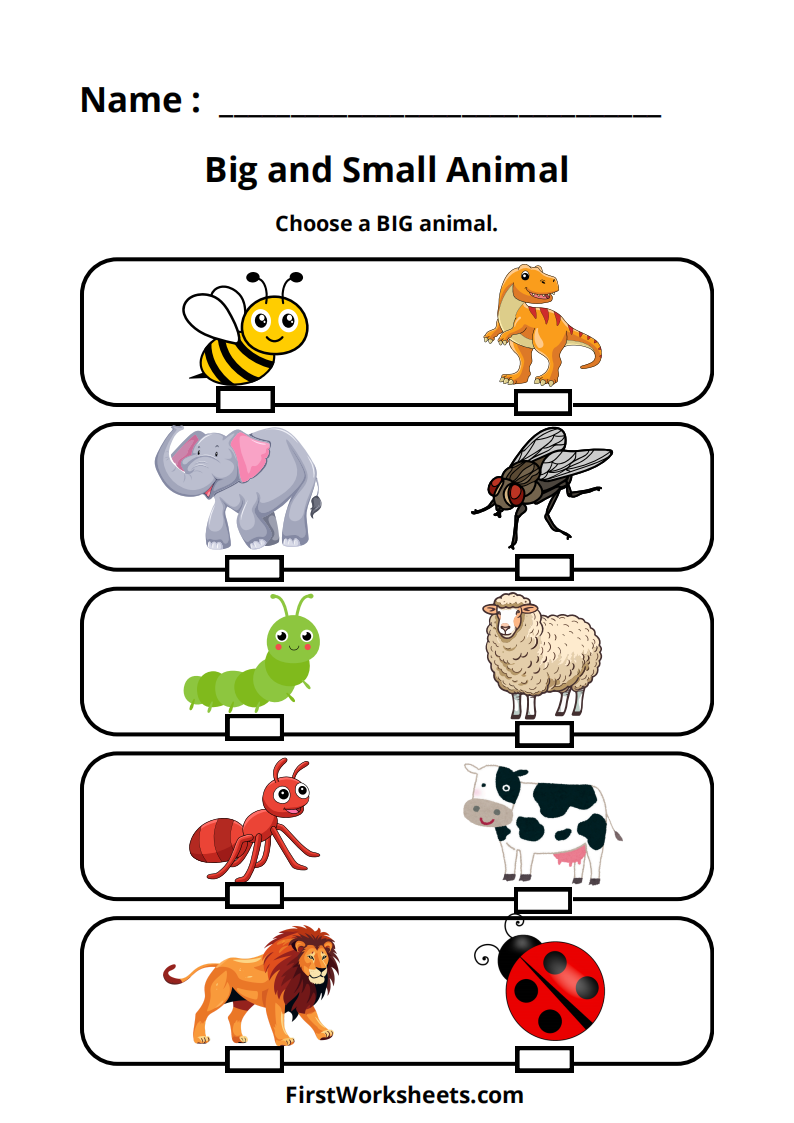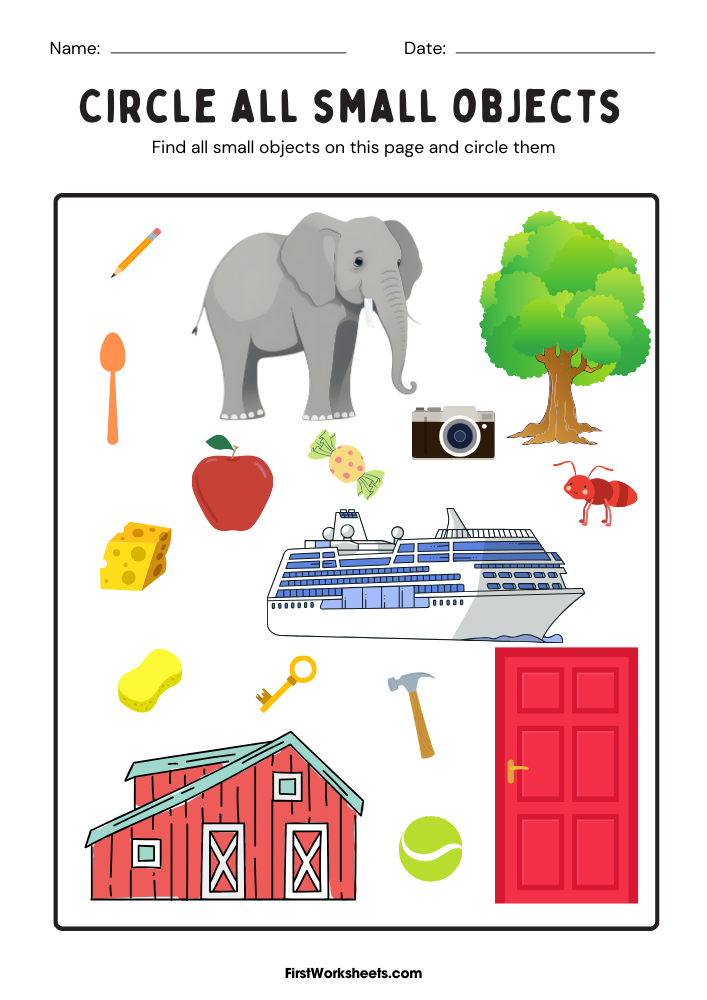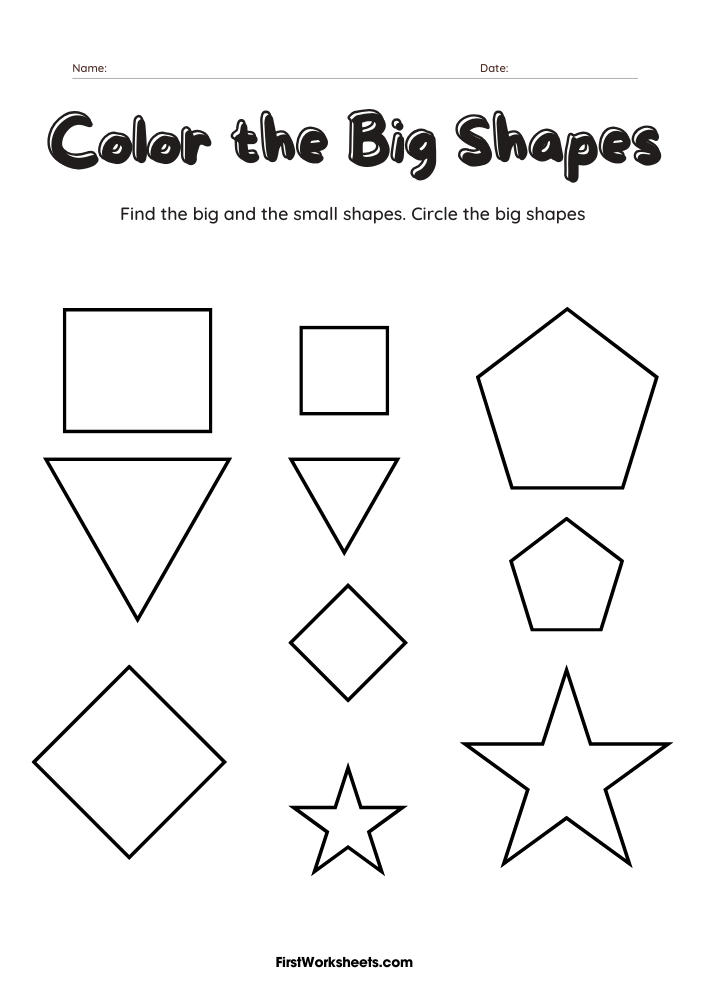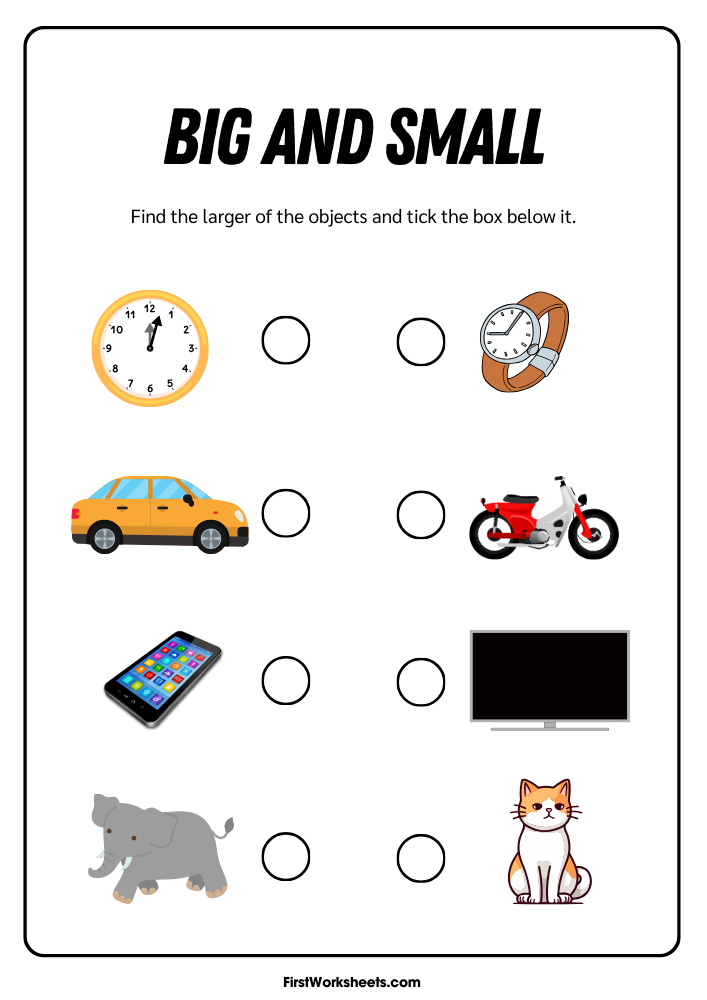Big and Small Worksheets
Big and small worksheets are educational tools designed to help young children understand the concept of size differentiation. These worksheets are commonly used in preschool and early elementary classrooms, as well as in home schooling environments. They play a crucial role in cognitive development by enhancing a child’s ability to compare, categorize, and recognize objects based on their size.
Importance of Teaching Size Concepts
Understanding the concepts of “big” and “small” is foundational for children’s mathematical and language development. Grasping these ideas helps children:
- Develop Comparative Skills: Learning to differentiate sizes aids in understanding relationships between objects.
- Enhance Vocabulary: Introducing terms like “bigger,” “smaller,” “largest,” and “smallest” expands language skills.
- Prepare for Advanced Concepts: Early size comparison sets the stage for learning measurements, quantities, and spatial reasoning.
Types of Big and Small Worksheets
- Matching Activities: Children draw lines connecting big objects on one side of the page with their smaller counterparts on the other side.
- Coloring Pages: Kids color objects based on instructions, such as “Color the big apple red and the small apple green.”
- Cut and Paste: Worksheets where children cut out pictures and sort them into “big” and “small” categories.
- Circle the Object: Exercises that ask children to circle the bigger or smaller object among a pair or group.
- Sequencing Tasks: Arranging objects from smallest to biggest or vice versa.
Benefits of Using Worksheets
- Fine Motor Skills Development: Activities like coloring, cutting, and pasting improve hand-eye coordination.
- Engagement: Interactive worksheets keep children engaged, making learning fun.
- Assessment Tool: Teachers and parents can assess a child’s understanding and identify areas needing reinforcement.
- Customization: Worksheets can be tailored to a child’s interests, such as using animals, toys, or food items, to make learning more relatable.
Incorporating Other Learning Elements
- Language Skills: Include new vocabulary words and encourage children to use them in sentences.
- Math Concepts: Introduce basic counting by having children count objects of different sizes.
- Storytelling: Use the images as prompts for creative stories, enhancing imagination and verbal skills.
Big and small worksheets are more than just busy work; they’re essential tools that contribute significantly to a child’s early development. By carefully selecting or designing worksheets that are engaging and educational, parents and teachers can provide children with a strong foundation in size differentiation, setting the stage for future learning success.
